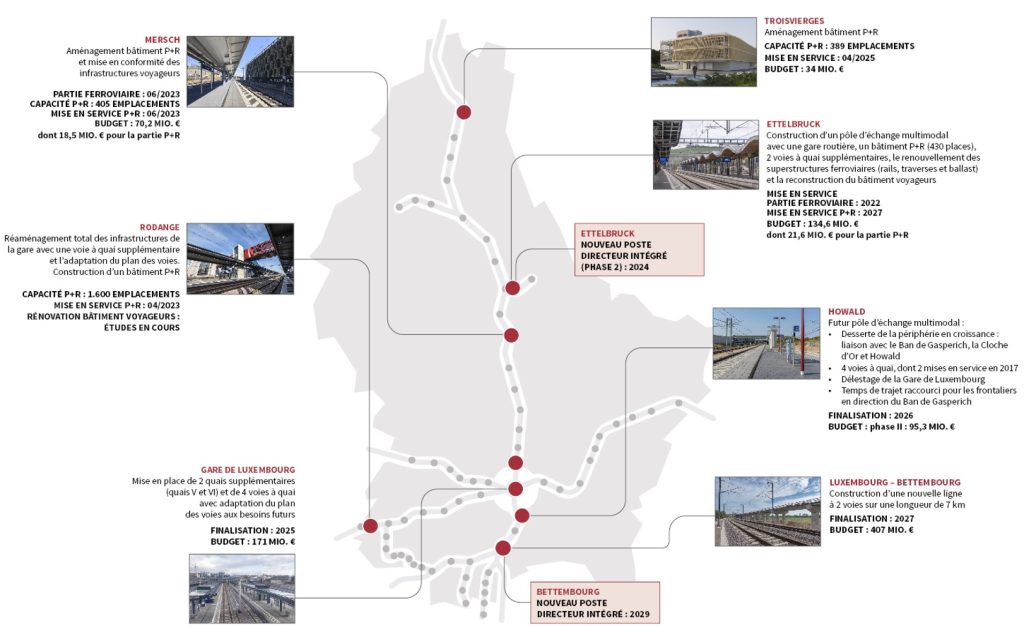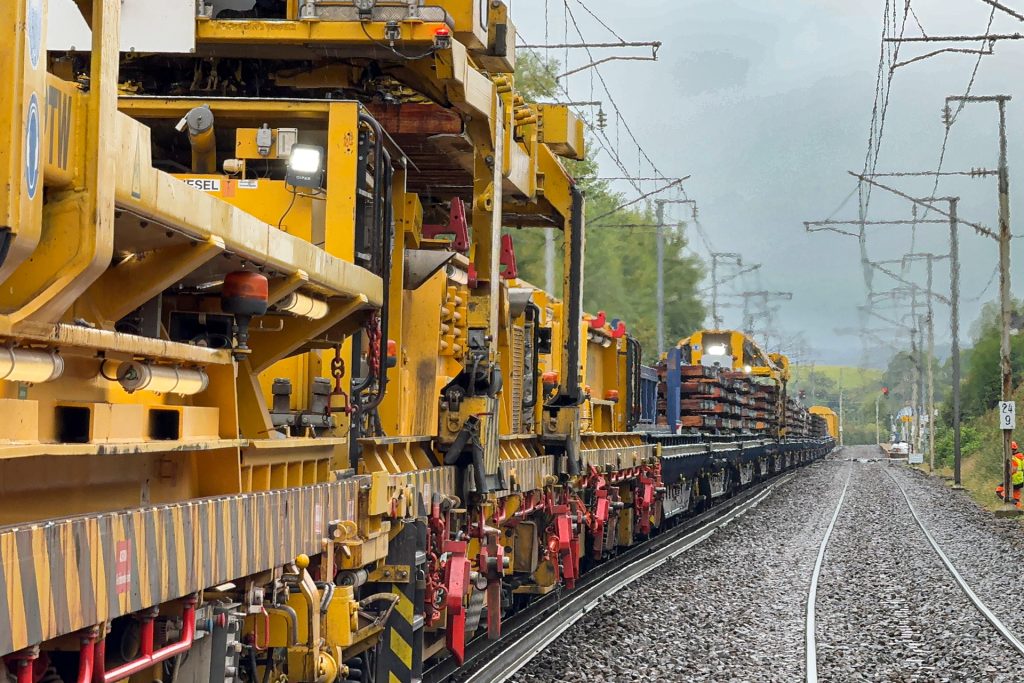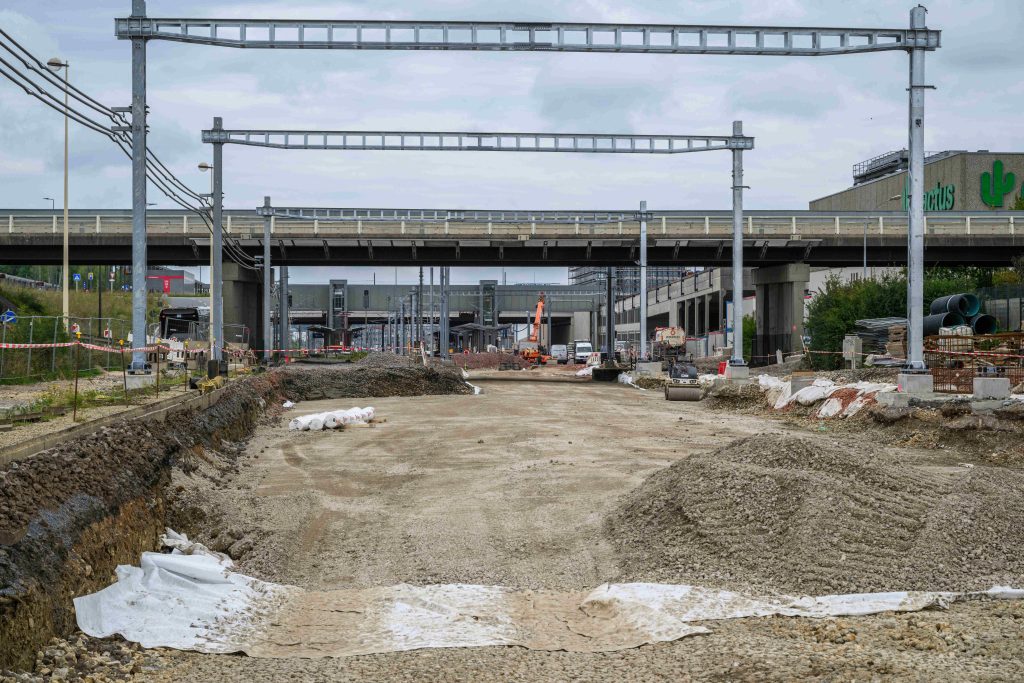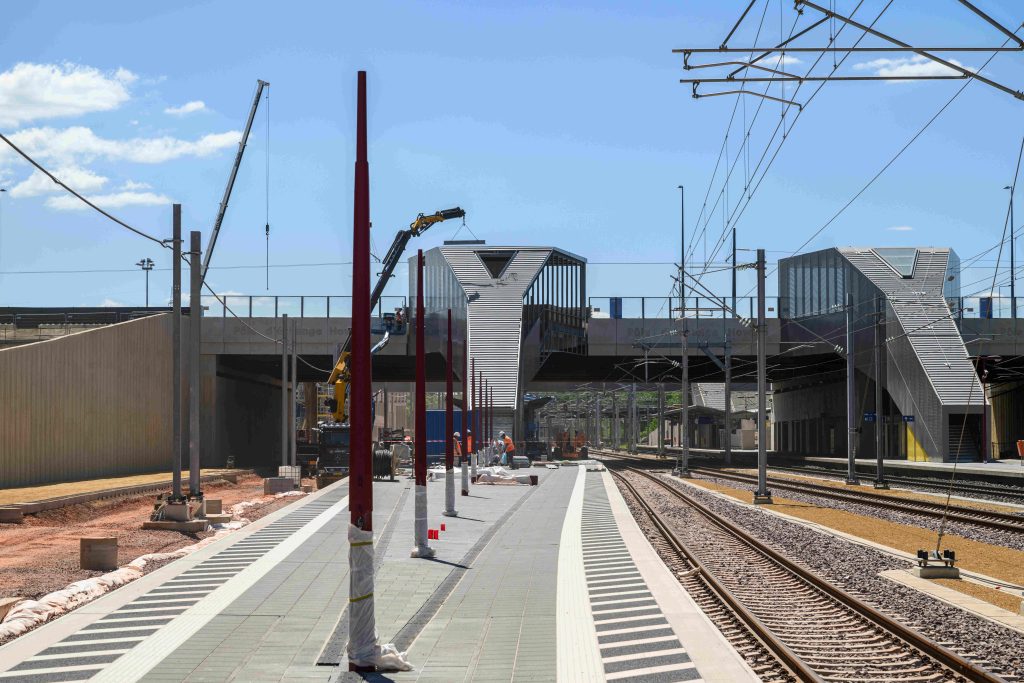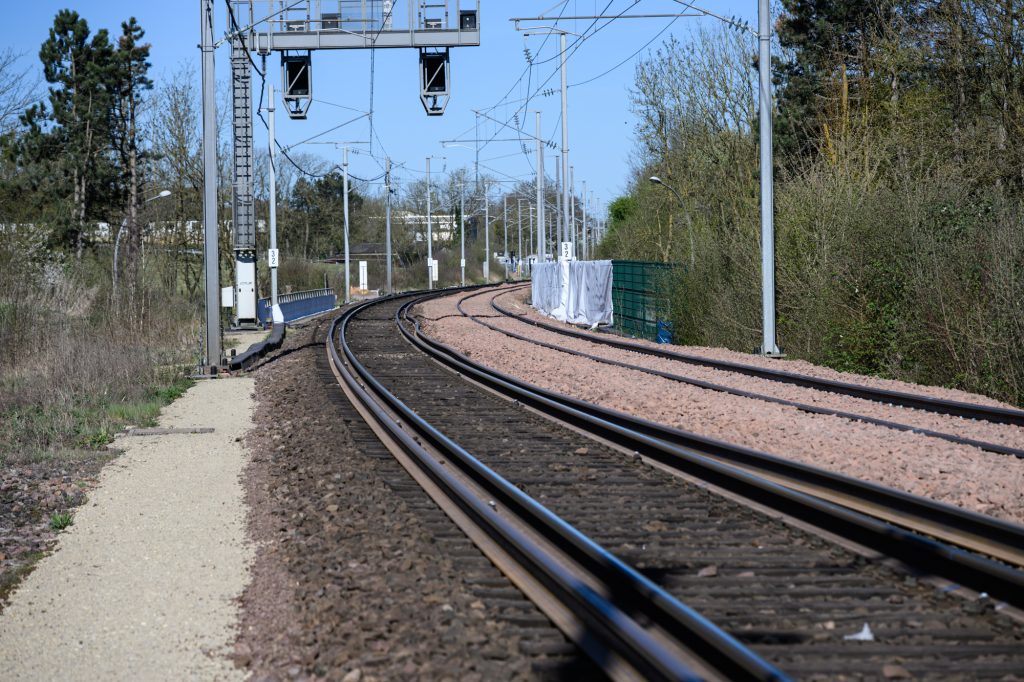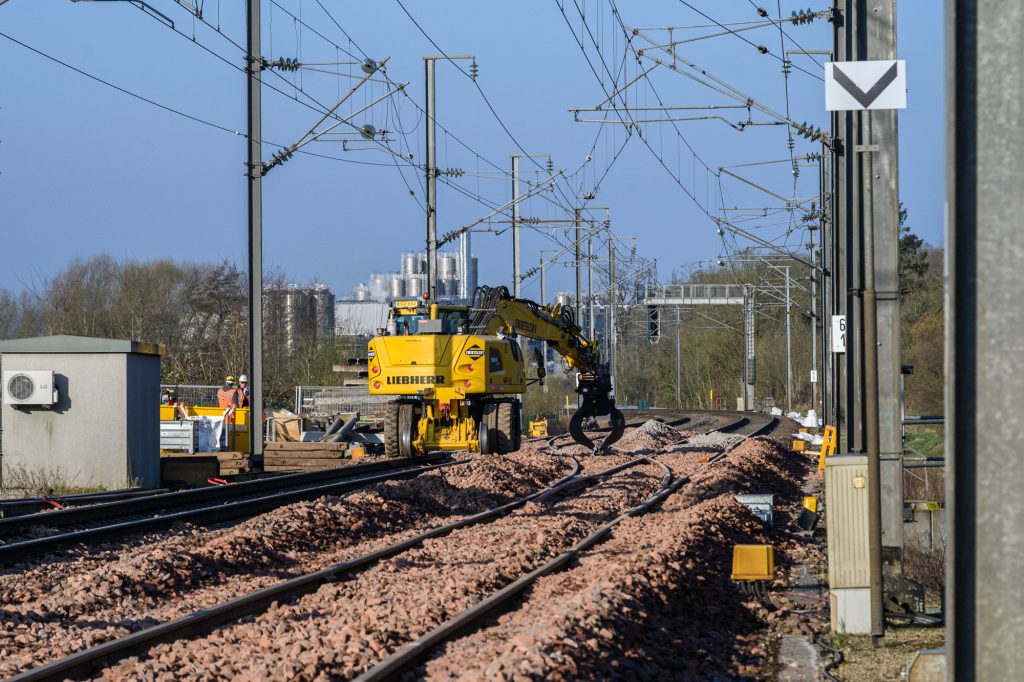
The new Luxembourg – Bettembourg line in pictures… and in numbers
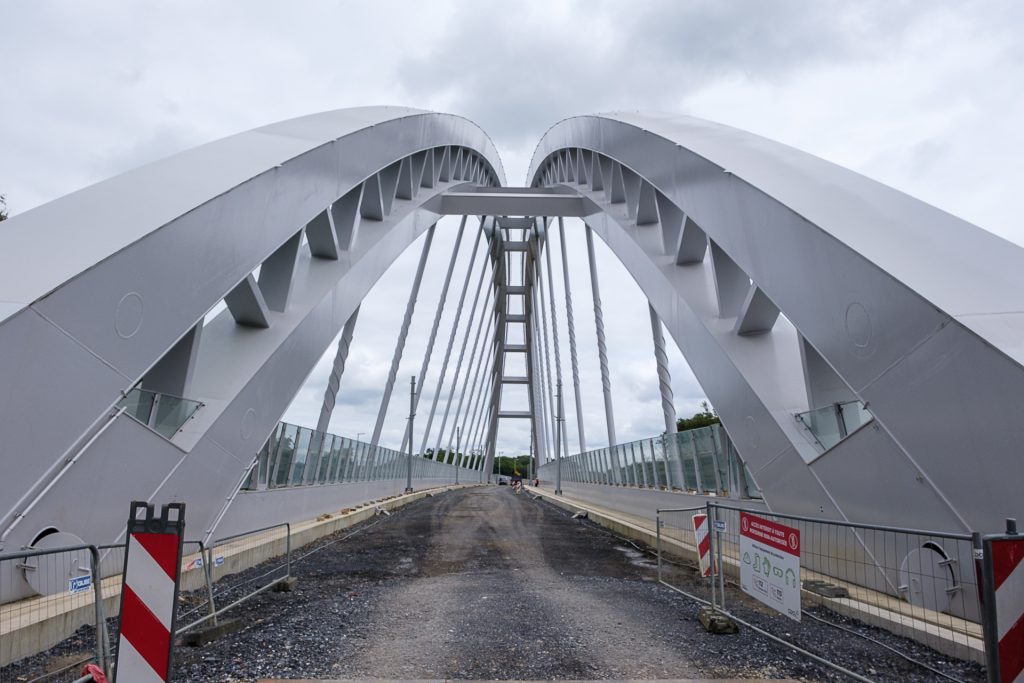
Construction work on the additional line between Bettembourg and Luxembourg is progressing at a steady pace. Take a guided tour, with figures, of this historic project for the CFL and mobility in the Greater Region.
Building a new railway line is a demanding project that has to be planned rigorously, with one objective in mind in this case: to relieve traffic on the busiest section of the rail network (Luxembourg – Bettembourg) and, above all, to continue to offer a high-quality service to CFL customers. All this against a backdrop of exponential growth in train passengers: +100% between 2005 and 2023.
The emergence of an additional line between Luxembourg and Bettembourg (Neubaustrecke – NBS) is historic both in terms of its impact on mobility and the scale of the works, which can be appreciated even more clearly in pictures… and in numbers.
A project funded by the Ministry of Mobility and Public Works and co-financed by the European Union’s Connecting Europe Facility.
Conditions for commissioning the NBS: the transformations of the Luxembourg Station and the Howald railway stop. At the gates of the country’s main railway station, a new entrance/exit is being built until May 2026, with the renewal of 11.5 km of track (including 8.5 km in 2024) and 32 switches in the capital’s shunting yard, as we explained in a previous article.
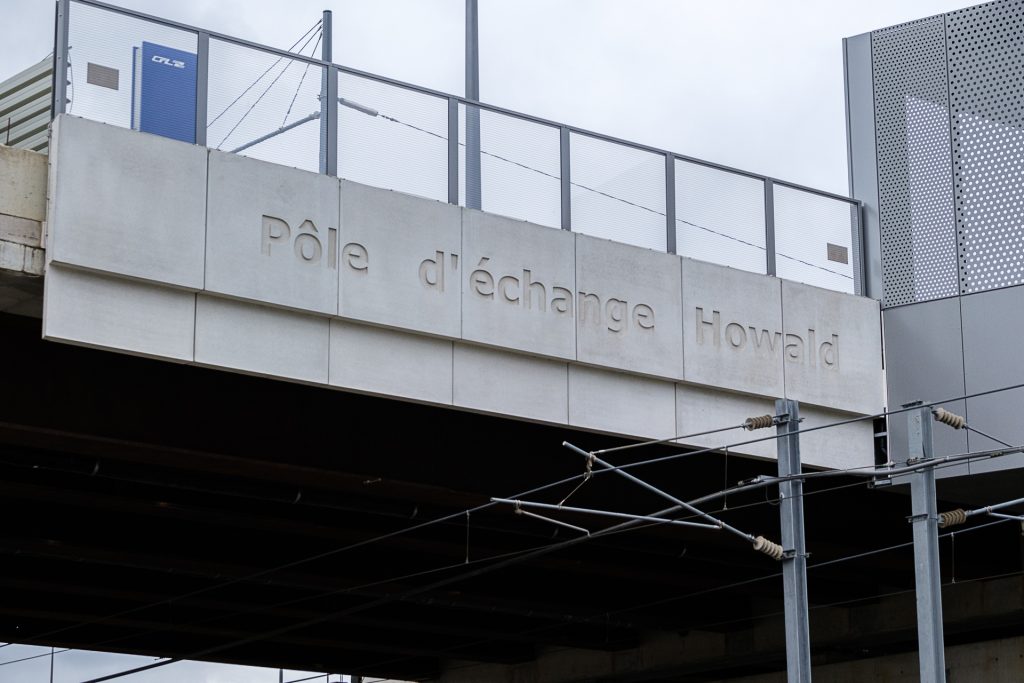
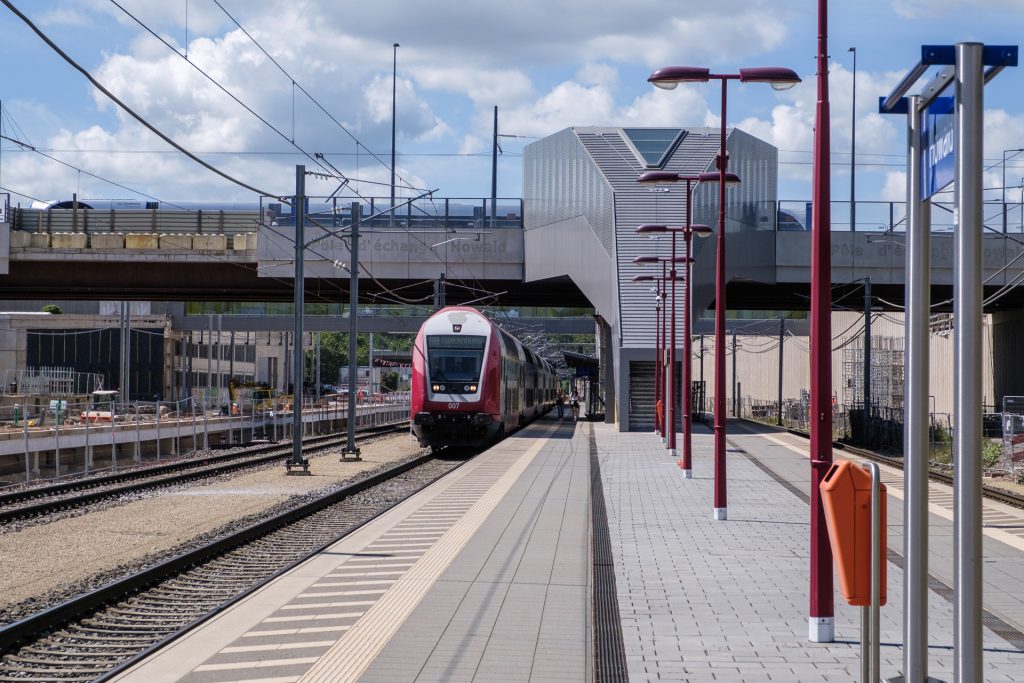
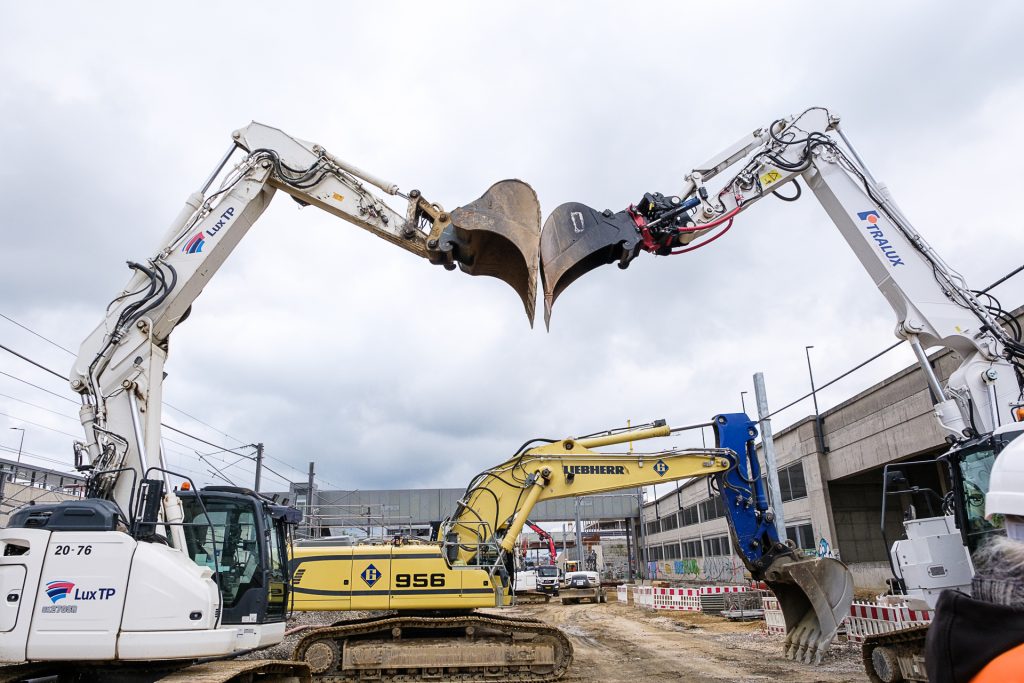
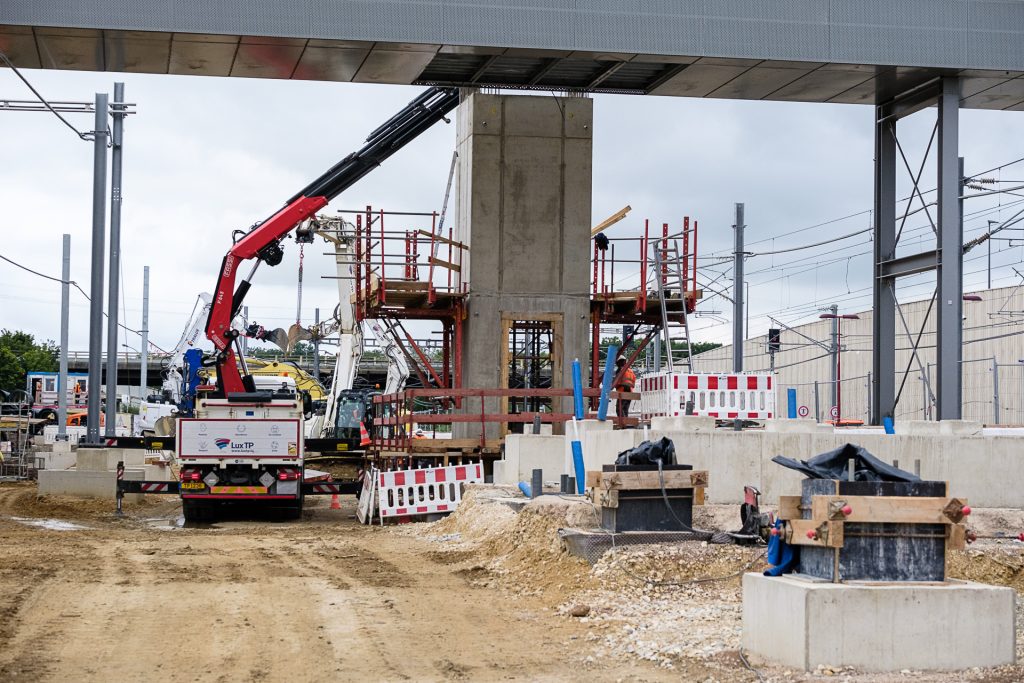
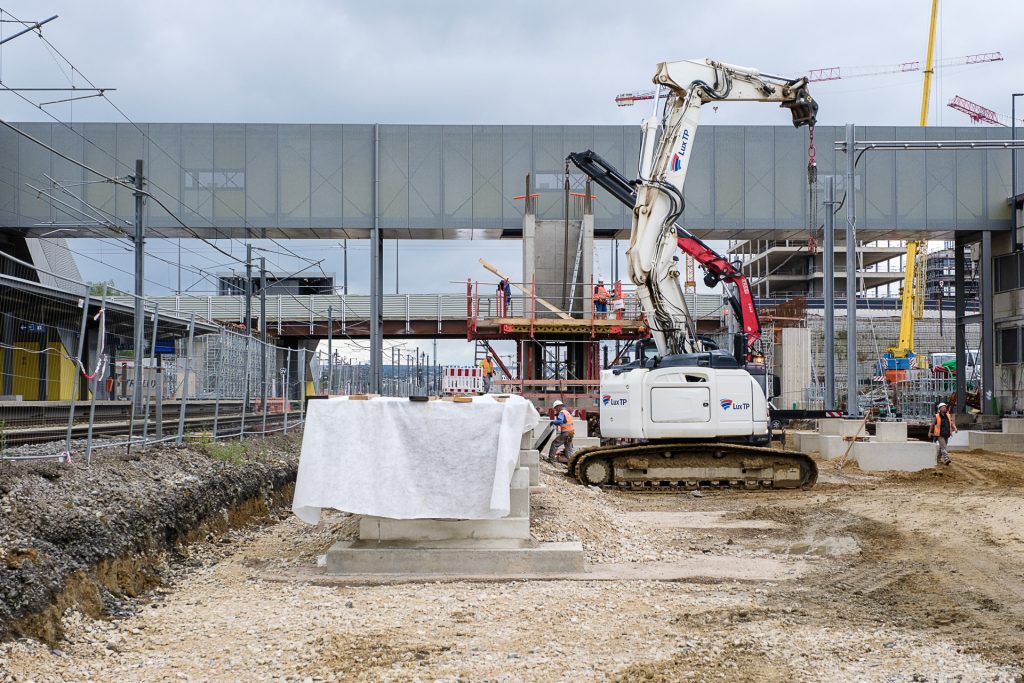
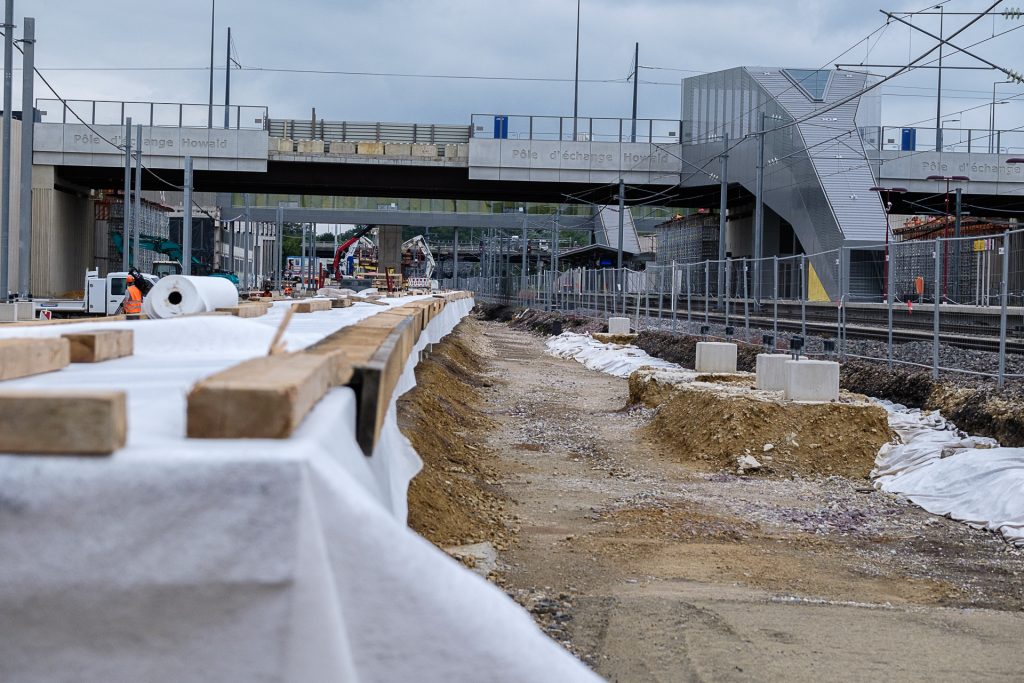
Read also: A whooping 17 metres extension for the footbridge in Howald
Stretching for seven kilometres from the Howald railway station, the double-track line includes 8 ouvrages d’art (bridges) built by the CFL, half of which span the A3 motorway.
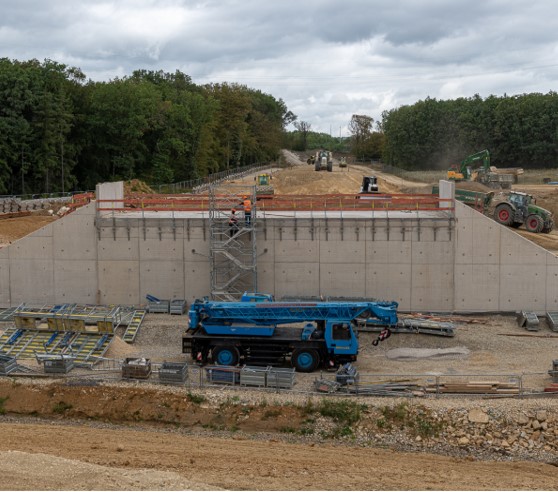

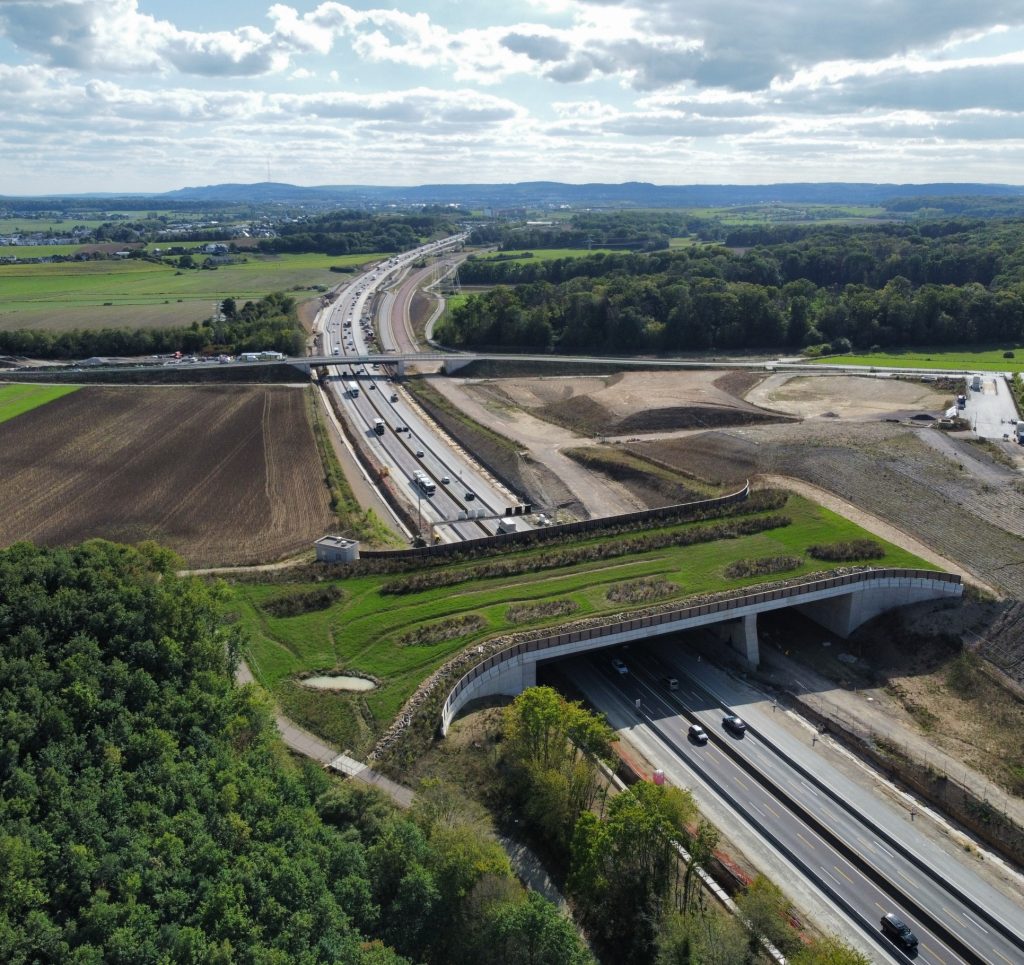

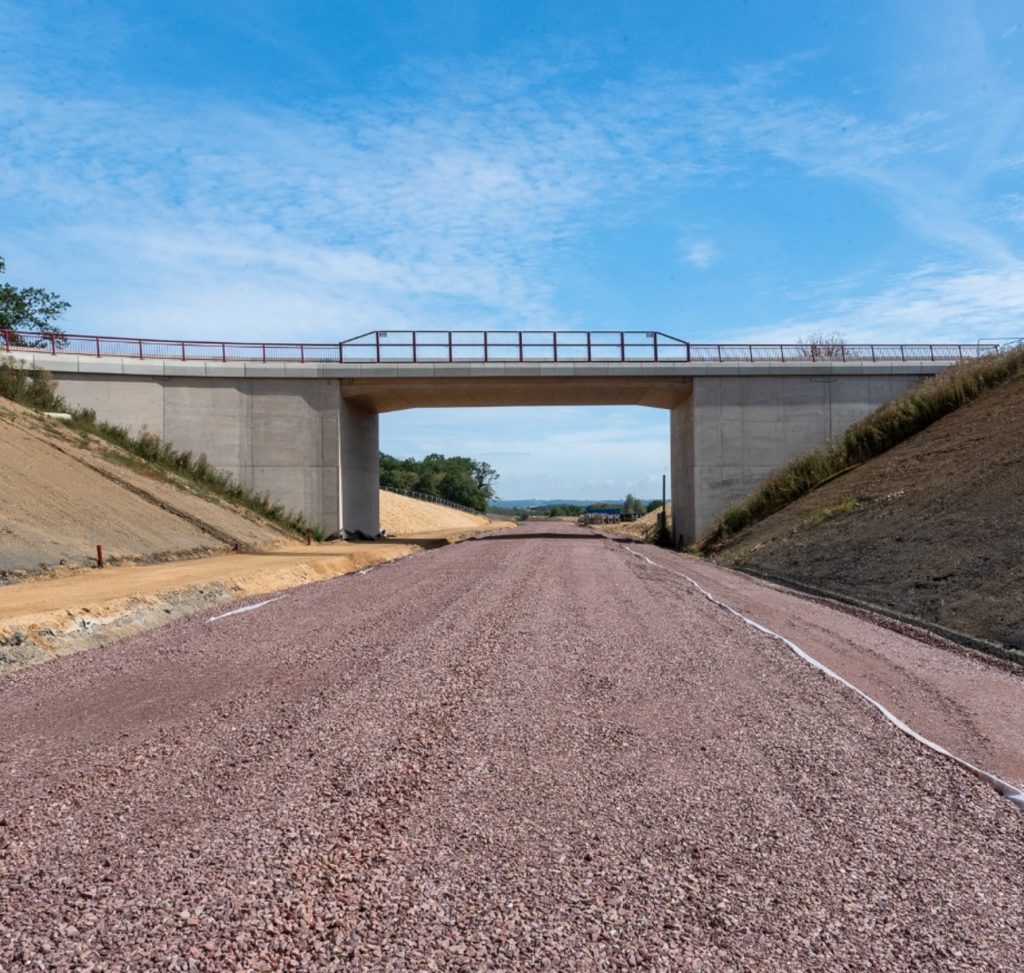
One of the most majestic engineering structures is undoubtedly the OA14, which was placed over the A3 motorway in October 2022. One of the largest bow-string railway bridges in Europe, it combines the expertise and know-how of the CFL, Luxembourgish engineering firms, and the knowledge of various Luxembourgish and European trades and companies to create a bridge that boasts :
- 200 metres in length and 40 metres in height,
- 14.10 metres clear width,
- Two tie rods made up of 22 elements, the largest of which weigh 120 tonnes,
- Two double arches of 36 elements,
- Almost 30 tonnes of welding wire required,
- 12,500 tonnes after completion.
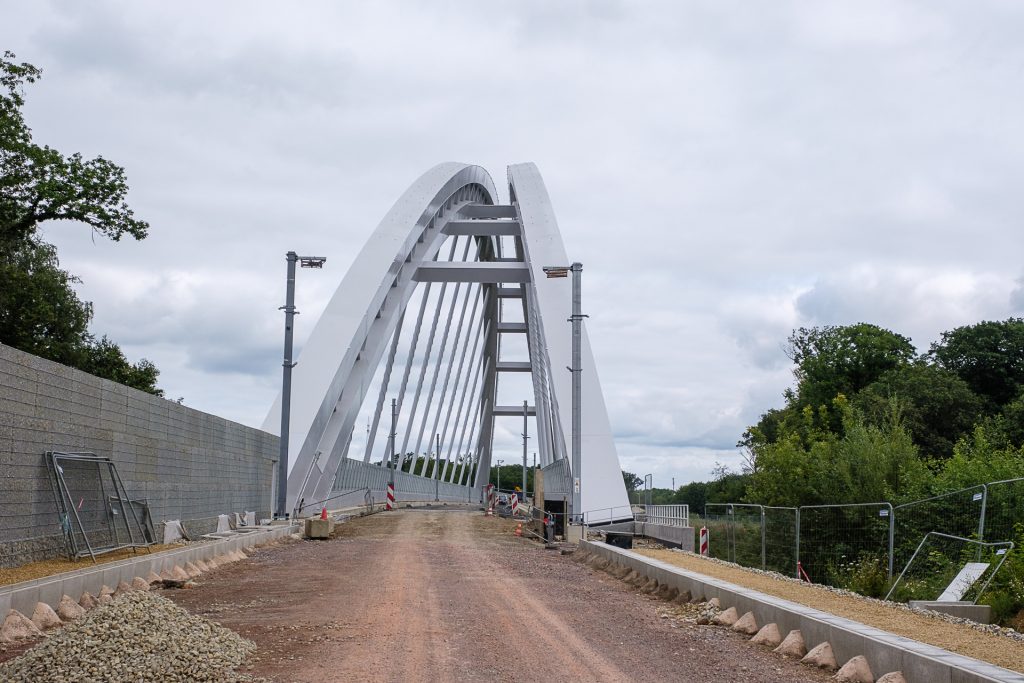
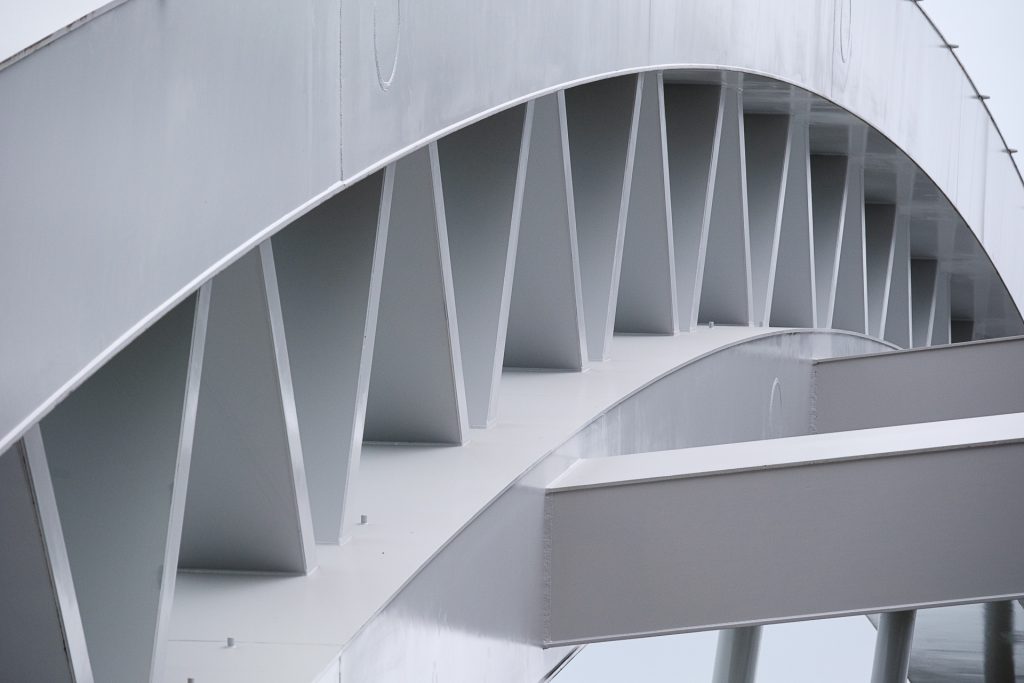

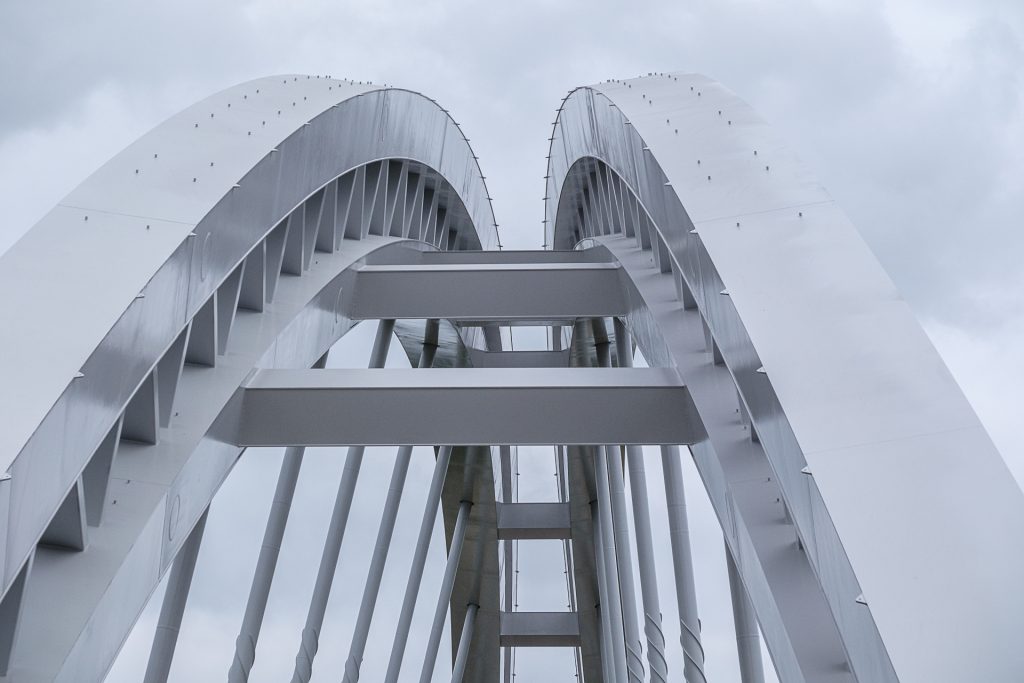
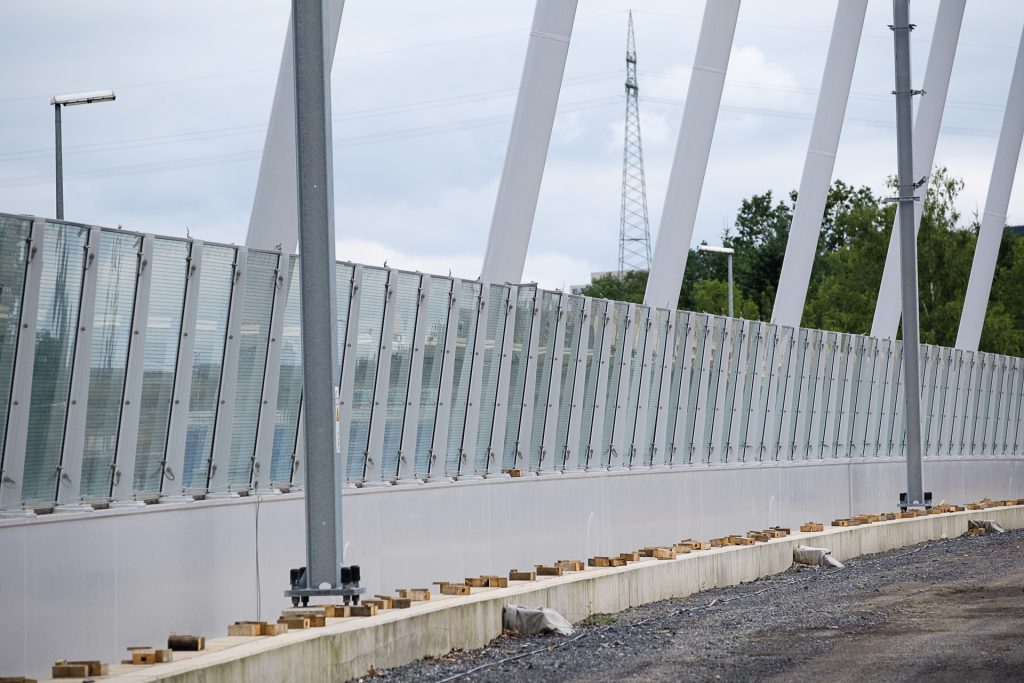

Equally impressive at first glance is the flyover (flying junction). On leaving Bettembourg station, where they will both meet, the new line (NBS) and the existing line (ABS) take their own paths towards the capital. This is where the NBS passes over the ABS via the OA5 and OA6 for 610 metres.

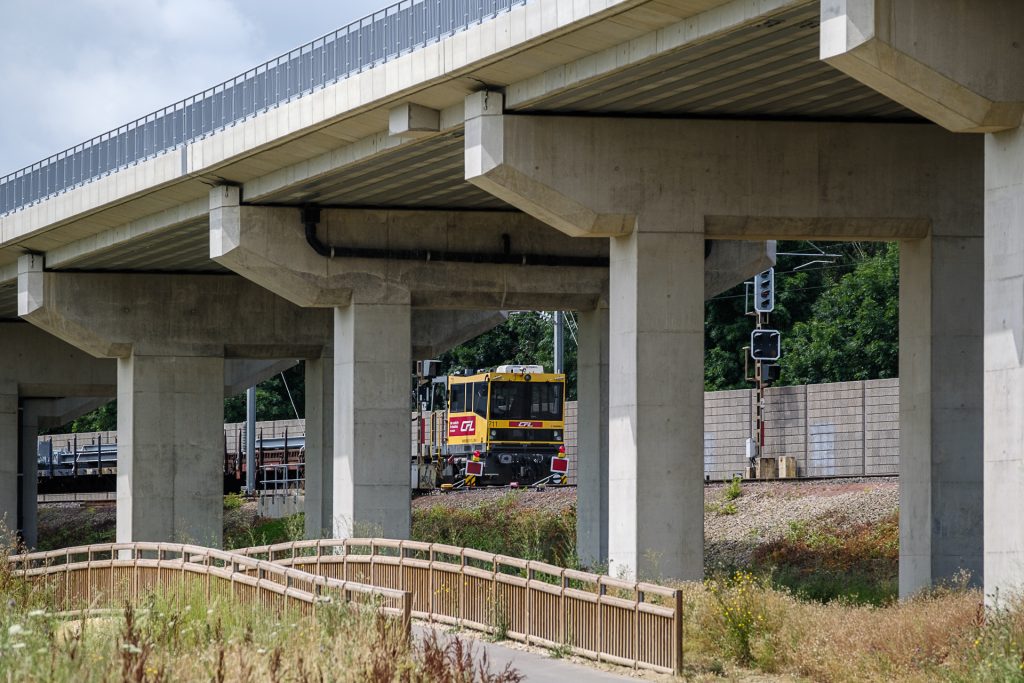

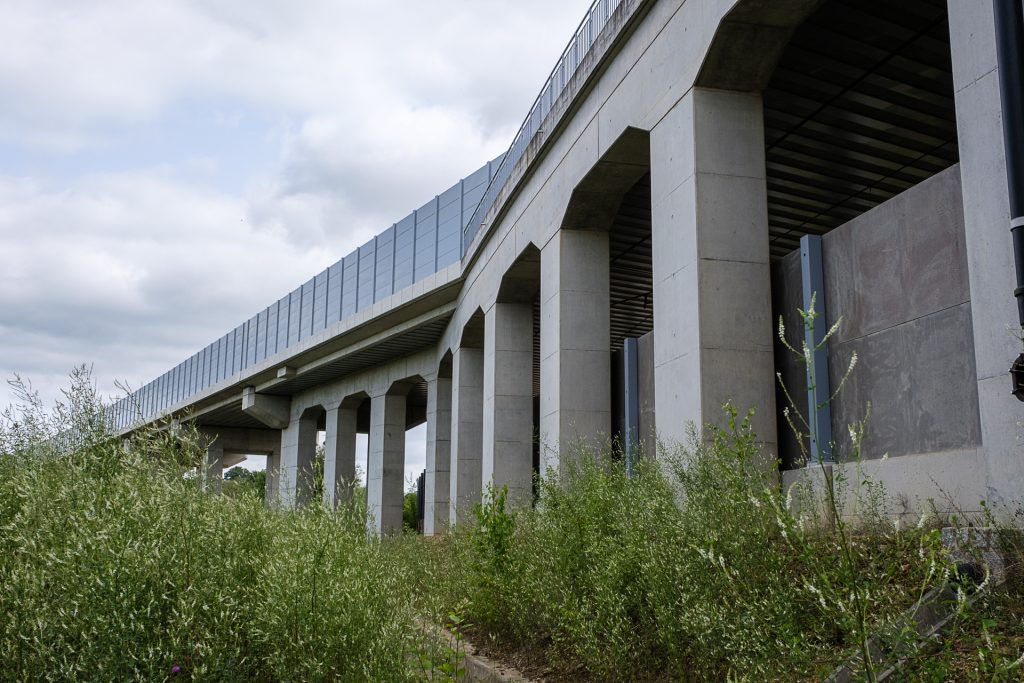
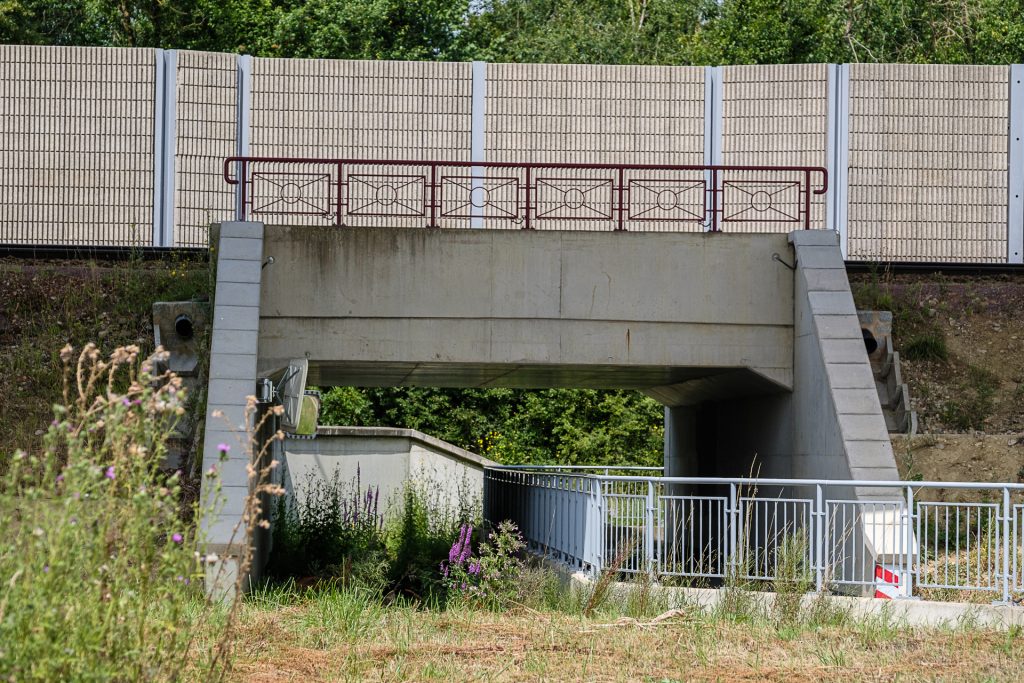
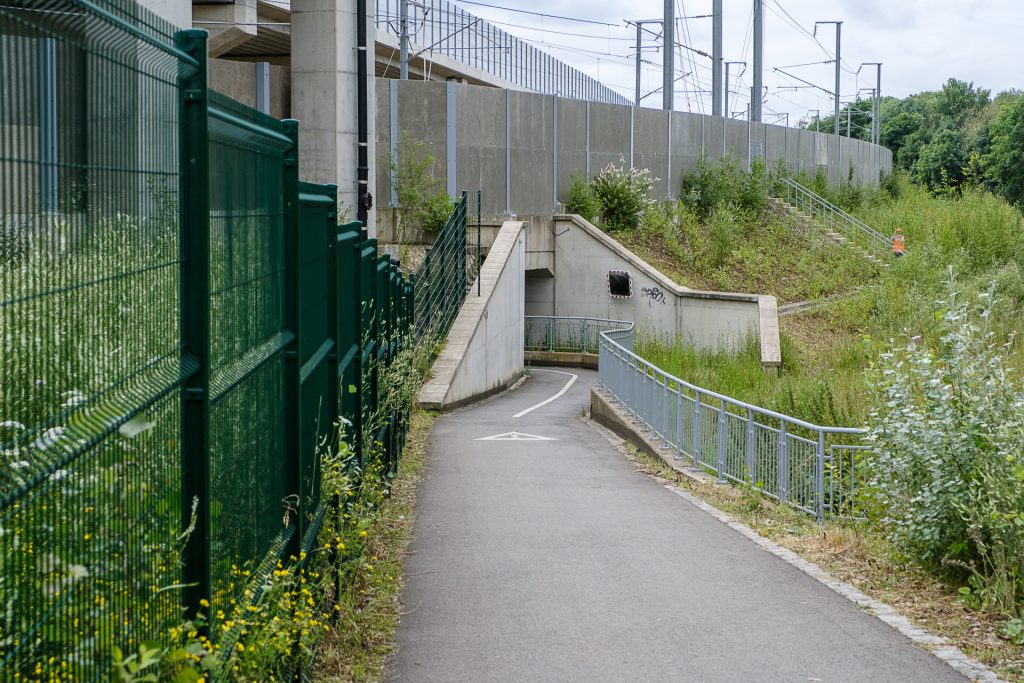
The OA7 allows road traffic from the N31 at Livange to cross over the new line and the PC 103 cycle path. This structure will be completed in 2024. With a length of 20 metres, it includes:
- 2 traffic lanes (2 x 3.50m),
- 2 hard shoulder lanes (2 x 3.50 m),
- 1 pavement (1.50 m),
- 1 mixed pavement / cycle lane (3.50 m).

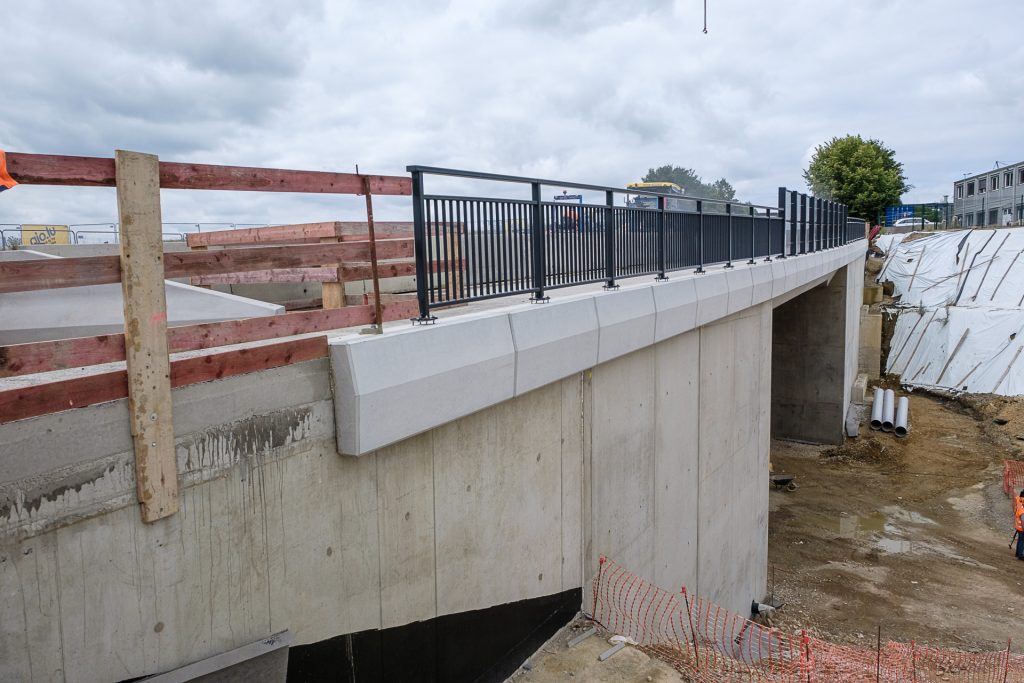
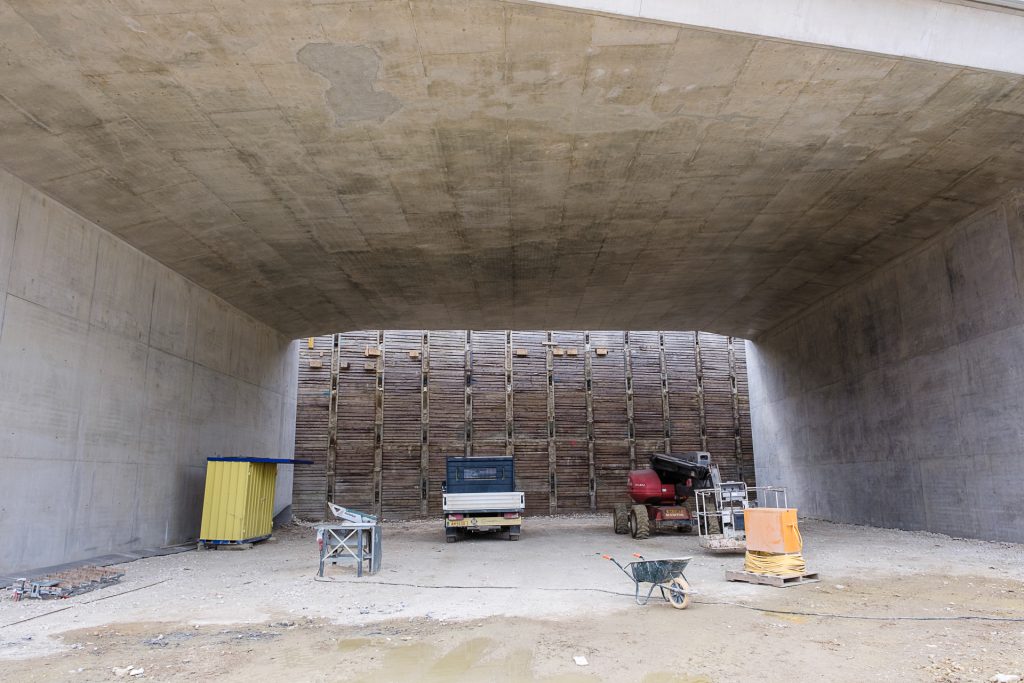
To build the NBS route, one million m3 of earth was dug up and 700,000 tonnes of ballast will be spread over the 7 km.
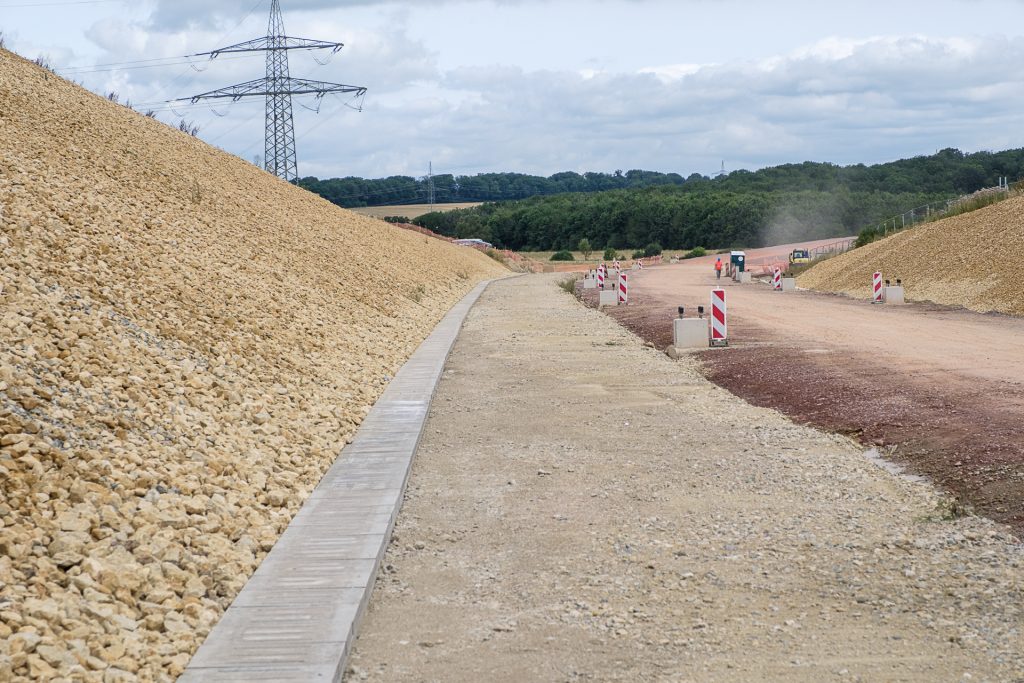
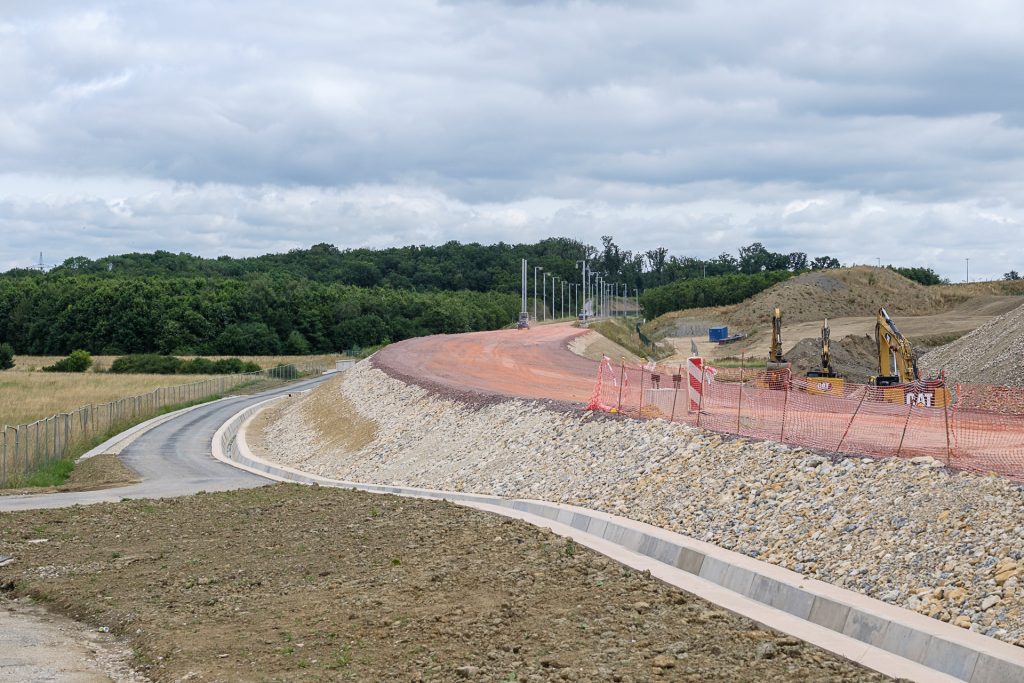
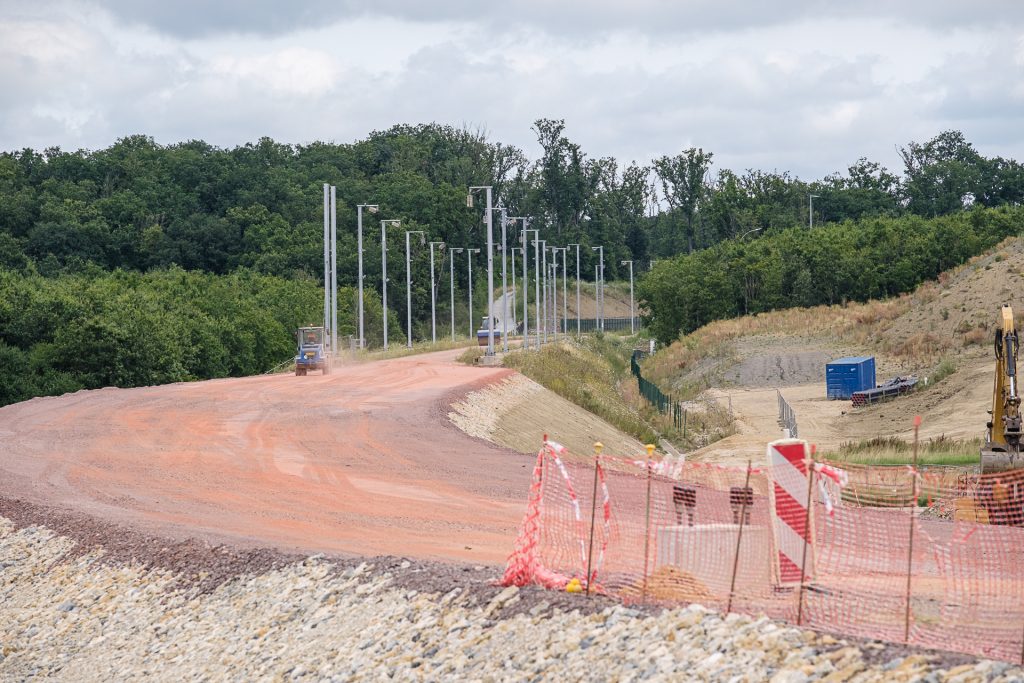
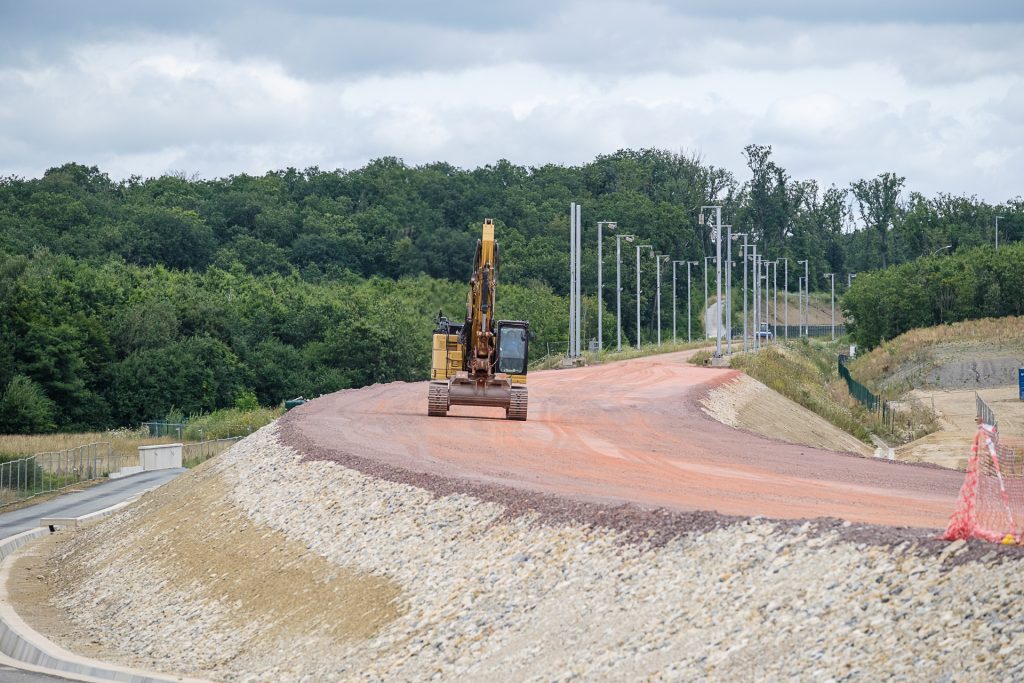


188 of the 362 overhead contact line poles have already been installed. 14 km of catenaries will be rolled out end 2026, along with 150 km of signalling, radio and signal cables.
Less visibly, 3,000 ballasted columns have been driven in to reinforce the ground between the ‘saut-de-mouton’ and the Aire de Berchem, a particularly marshy area, and 1,000 rigid inclusions placed to the north of Bettembourg station. 13 water retention basins with a total capacity of 4,750 m3 of water have also been built to manage surface water from the railway platform.
In 2024, several operations will be carried out at the same time: the preparatory work for the future NBS connection at Bettembourg station, such as the overhead line foundations and the installation of the future overhead line gantries on section 1, the continuation of earthworks and foundations, and the installation of overhead line poles on the rest of the sections 2, 3 and 4.

Between now and 2027, the new line (Neubaustrecke – NBS) will gradually enter service after a whole series of tests and trials during the railway closure in summer 2027 that are essential to guarantee the safety of the CFL’s customers and employees, a top priority for the CFL during all phases of the construction and operation of this type of infrastructure.
Thanks to the expansion of the rail network with the NBS, the CFL offer will experience a quantum leap from 2028 with:
- More punctual trains and a more reliable service thanks to the separate lines between Luxembourg – Esch/Alzette – Rodange and Luxembourg – Thionville – Metz – Nancy. Trains from France will run on the new line and trains to Esch/Alzette – Rodange on the existing line, which will remain in service,

- Easier access to the capital’s emerging districts, notably via the Howald interchange,
- Direct trains from Luxembourg to Dudelange and Volmerange-les-Mines,
- Improved freight traffic from Germany and the Benelux countries to France.
An ambitious multi-year modernisation and extension programme
The additional line between Luxembourg and Bettembourg symbolises the CFL’s vision for the rail network, i.e. the separation of train movements on each line and their independent management in the country’s major stations, with dedicated platforms and redesigned entrances/exits to avoid the ‘domino’ effect (transfer of delays from one train to another) and bottlenecks (congestion at station entrances).
These are long-term projects, thanks to the constant commitment of the CFL teams and their service providers, and they are well worth the effort: anticipating tomorrow’s mobility, for the benefit of customers, the country and the decarbonisation of individual and freight transport flows. More than 20 companies and several hundred employees will continue to be involved in the NBS project alone.
